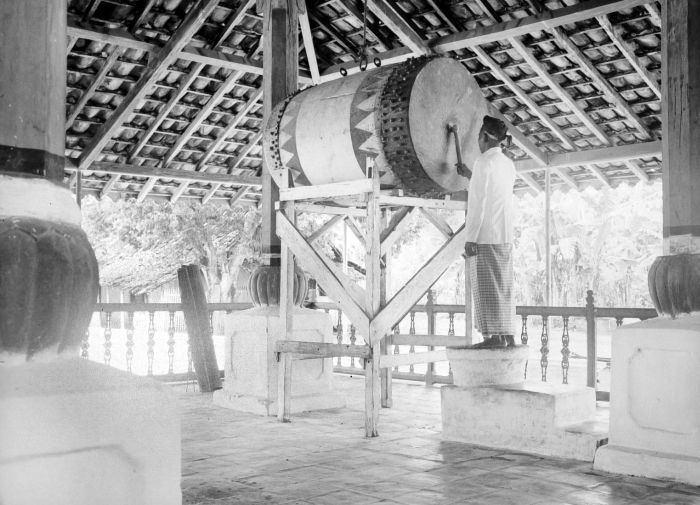Other names Beduk, Bedhug Classification Membranophone Name Bedug Bedug | Developed Indonesia | |
 | ||
Hornbostel–Sachs classification 211.212.1
(Cylindrical drum) | ||
Bedug Takbir Idul Fitri 1456H- teknik tabuh beduk Gandusari
The beduk (Indonesian: bedug Javanese: bedhug) is one of the drums used in the gamelan. It is also used among Muslims in Java in religious purposes.
Contents
Overview
Unlike the more frequently-used kendang, the bedug is suspended from a rack and played with a padded mallet. It is similar in size or larger to the largest kendang. It is not adjustable like the kendang, but has pegs holding the two identical heads in place, similar to the Japanese taiko. Its sound is generally deeper and duller than that of the kendang.
Bedug is made as a big double-barreled drum with water buffalo leather on both sides.
Usage
The bedug is not used in most gamelan performances, but is used in special ensembles like the gamelan sekaten, where it takes the place of the kempul. In some pieces it is used together with the kendang, especially to accompany dance.
Bedug also commonly used in mosques in Java among Javanese and Sundanese people to preclude the adhan as a sign for prayer, or during Islamic festivals. For example, bedug is used to signal the end of the daylong fast during Ramadan, sometimes it is used to signal time for Suhoor during Ramadan. When used to signal time for Friday prayer, bedug is beaten in a different way than in ordinary prayers. Bedug is also used to celebrate takbiran, a night before Eid ul-Fitr when people chant takbir and hit the bedug drum in Indonesian Lebaran tradition.
